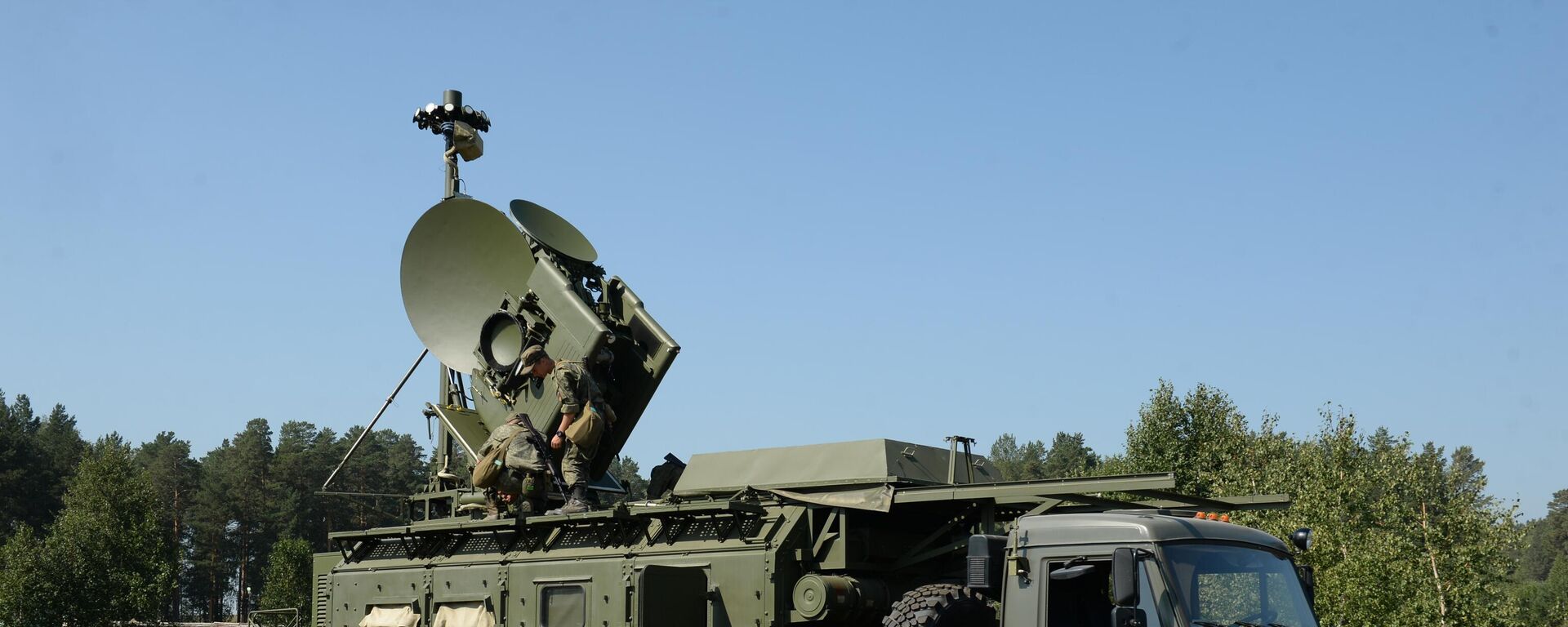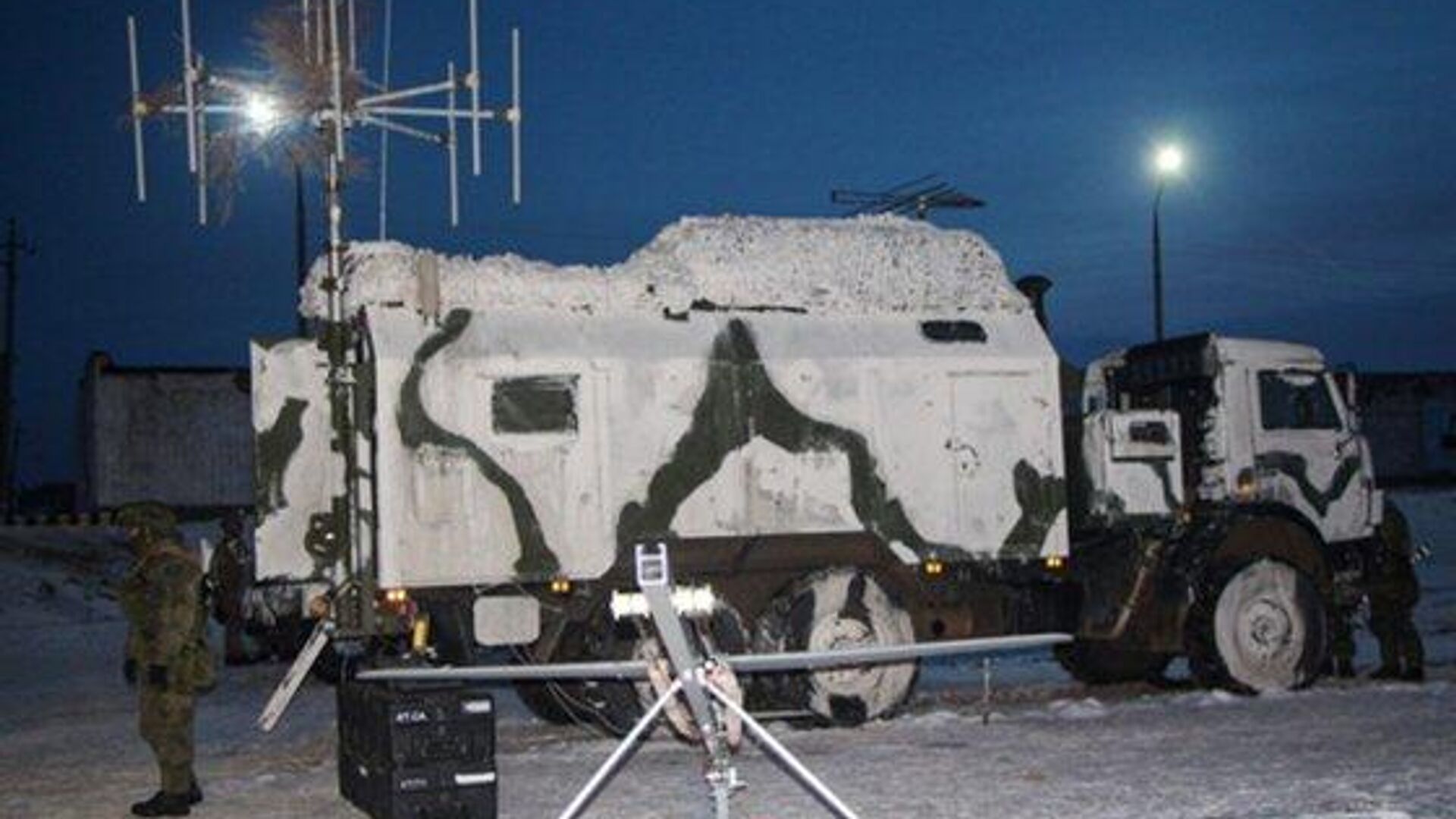https://sputnikglobe.com/20231120/nato-smart-artillery-swatting-prodigy-meet-russias-polye-21-radio-electronic-warfare-complex-1115072594.html
NATO Smart Artillery-Swatting Prodigy: Meet Russia’s Polye-21 Radio-Electronic Warfare Complex
NATO Smart Artillery-Swatting Prodigy: Meet Russia’s Polye-21 Radio-Electronic Warfare Complex
Sputnik International
Electronic warfare has been a Russian strong suit going back to the mid-20th century and the Soviet military doctrine’s emphasis on the “total integration of electronic warfare and physical destruction resources” on the battlefield. Today, Russia has an array of short, medium, long and ultra-long range electronic warfare systems at its disposal.
2023-11-20T12:08+0000
2023-11-20T12:08+0000
2023-11-20T12:36+0000
military
military & intelligence
russia
ukraine
kiev
valery zaluzhny
nato
lancet
excalibur
galileo
https://cdn1.img.sputnikglobe.com/img/07e7/0b/14/1115072417_0:29:560:344_1920x0_80_0_0_391bd24ed3265aab2f2b398b43655a97.jpg
A leading US business magazine has outlined challenges facing Ukraine’s NATO-equipped armies, echoing complaints made in Ukrainian Armed Forces Commander-in-Chief Valery Zaluzhny in his bombshell interview and article earlier this month outlining why Kiev’s counteroffensive had become a “stalemate.”According to the magazine, a big part of the problem for the Ukrainian military is Russia’s technological advantage, specifically the use of technologies that allow Russia “to precisely hit Ukrainian targets while also limiting the effectiveness of Ukrainian artillery.” Specifically, the piece points to Russia’s use of Lancet drones, which are proving “difficult to detect and operate on an unpredictable flight path,” and the Polye-21 [lit. "Field-21"] electronic warfare system, which effectively “jams the GPS signals necessary for the Excalibur rounds fired by the Ukrainians.” The latter, it is said, “results in the rounds veering off their intended course and not striking their target.”Sputnik has already written extensively about the capabilities of the Lancet loitering munition. You can find more information about these UAVs here, here and here.As for the Polye-21, well, here’s what we know about it.Developed by the Voronezh and St. Petersburg-based Scientific and Technical Center for Electronic Warfare (or JSC STC Electronic Warfare for short), the Polye-21 is a specialized electronic warfare complex designed to take on enemy cruise missiles, smart bombs, drones, smart artillery rounds, aircraft – and basically any enemy projectiles or equipment relying on satellite navigation-based guidance.The Polye-21 doesn’t discriminate, and can target enemy weapons using the American-made GPS standard just as readily as it can the European Union’s Galileo, China’s BeiDou and even Russia’s own GLONASS.How Does the Complex Operate?Each Polye-21 complex consists of a powerful R-340RP radio station, small enough to be mounted aboard a truck chassis (or in a permanently stationary configuration, if preferred), plus a control system to operate an array of antenna modules (up to 100 per system) – each of which can help suppress signals at ranges up to 25 km. In all, a single Pole-21 complex can create an "invisible dome" of interference blanketing an area up to 150 km x 150 km.Like many modern Russian weapons designs, the Polye-21 complex is built on a modular principle, designed to simplify production and deployment and reduce expenses. Several modifications of the system exist, including the Polye-21M, a modernized variant of the base model, and the export-oriented Polye-21E. The system’s designers have been tightlipped about the differences between its variants.First shown off by JSC STC Electronic Warfare in 2013, the Polye-21 reportedly began to be introduced into service with the Russian military in 2016. Since their introduction, the systems are known to have been adopted by electronic warfare units operating across the Central, Southern and Eastern Military Districts, the Russian 201st Base in Tajikistan, and the base at Tartus, Syria.How Many Polye-21s Does Russia Have?The Polye-21’s introduction came just in time for them to become a mainstay of Russian defenses against Ukrainian attacks on targets across the western part of Russia, using both NATO-provided drones and cruise missiles and the Soviet-era Tupolev Tu-141 Strizh heavy (5+ tons) reconnaissance drones, which Kiev converted into strike UAVs.The system is now an important component of Russia’s broader layered radar, electronic warfare, air, and missile defense network.
https://sputnikglobe.com/20231006/scoop-russia-fine-tuning-electronic-warfare-systems-to-suppress-ukraines-f-16s-1113991192.html
russia
ukraine
kiev
Sputnik International
feedback@sputniknews.com
+74956456601
MIA „Rossiya Segodnya“
2023
News
en_EN
Sputnik International
feedback@sputniknews.com
+74956456601
MIA „Rossiya Segodnya“
Sputnik International
feedback@sputniknews.com
+74956456601
MIA „Rossiya Segodnya“
russia, ukraine, proxy war, polye-21, radio-electronic warfare, complex, system
russia, ukraine, proxy war, polye-21, radio-electronic warfare, complex, system
NATO Smart Artillery-Swatting Prodigy: Meet Russia’s Polye-21 Radio-Electronic Warfare Complex
12:08 GMT 20.11.2023 (Updated: 12:36 GMT 20.11.2023) Electronic warfare has been a Russian strong suit going back to the mid-20th century and the Soviet military doctrine’s emphasis on the “total integration of electronic warfare and physical destruction resources” on the battlefield. Today, Russia has an array of short, medium, long, and ultra-long range electronic warfare systems at its disposal.
A leading US business magazine has outlined challenges facing Ukraine’s NATO-equipped armies, echoing complaints made in Ukrainian Armed Forces Commander-in-Chief Valery Zaluzhny in his
bombshell interview and article earlier this month outlining why Kiev’s counteroffensive had become a “stalemate.”
According to the magazine, a
big part of the problem for the Ukrainian military is Russia’s technological advantage, specifically the use of technologies that allow Russia “to precisely hit Ukrainian targets while also limiting the effectiveness of Ukrainian artillery.” Specifically, the piece points to Russia’s use of Lancet drones, which are proving “difficult to detect and operate on an unpredictable flight path,” and the Polye-21 [lit. "Field-21"] electronic warfare system, which
effectively “jams the GPS signals necessary for the Excalibur rounds fired by the Ukrainians.” The latter, it is said, “results in the rounds veering off their intended course and not striking their target.”Sputnik has already
written extensively about the capabilities of the Lancet loitering munition. You can find more information about these UAVs
here,
here and
here.
As for the Polye-21, well, here’s what we know about it.
Developed by the Voronezh and St. Petersburg-based Scientific and Technical Center for Electronic Warfare (or JSC STC Electronic Warfare for short), the Polye-21 is a specialized electronic warfare complex designed to take on enemy cruise missiles, smart bombs, drones, smart artillery rounds, aircraft – and basically any enemy projectiles or equipment relying on satellite navigation-based guidance.
The Polye-21 doesn’t discriminate, and can target enemy weapons using the American-made GPS standard just as readily as it can the European Union’s Galileo, China’s BeiDou and even Russia’s own GLONASS.
Without the ability to accurately determine their coordinates, enemy drones, missiles, aircraft etc. cannot complete their combat mission, and are either forced to return to base (in the case of manned aircraft), or become disoriented, failing to reach their targets and eventually falling to the ground.

6 October 2023, 18:59 GMT
How Does the Complex Operate?
Each Polye-21 complex consists of a powerful R-340RP radio station, small enough to be mounted aboard a truck chassis (or in a permanently stationary configuration, if preferred), plus a control system to operate an array of antenna modules (up to 100 per system) – each of which can help suppress signals at ranges up to 25 km. In all, a single Pole-21 complex can create an "invisible dome" of interference blanketing an area up to 150 km x 150 km.
In addition to its own jamming towers, the system’s jamming modules can be installed on existing mobile phone towers, dramatically reducing the system’s cost and power requirements. A single 20 watt transmitter is sufficient for the system to jam all satellite navigation signals in an 80 km range, with the system deflecting and rendering useless global positioning signals in the 1176.45-1575.42 MHz range.
Like many modern Russian weapons designs, the Polye-21 complex is built on a
modular principle, designed to simplify production and deployment and reduce expenses. Several modifications of the system exist, including the Polye-21M, a modernized variant of the base model, and the export-oriented Polye-21E. The system’s designers have been tightlipped about the differences between its variants.
First shown off by JSC STC Electronic Warfare in 2013, the Polye-21 reportedly began to be introduced into service with the Russian military in 2016. Since their introduction, the systems are known to have been adopted by electronic warfare units operating across the Central, Southern and Eastern Military Districts, the Russian 201st Base in Tajikistan, and the base at Tartus, Syria.
How Many Polye-21s Does Russia Have?
The number of total produced and deployed Polye-21 and their per-unit price is unclear. However, a MoD report from early 2021 indicated that forces in the Central Military District alone planned to take delivery of some 10 Polye-21 systems on top of their existing inventory by the end of that year. Deliveries of the modernized Polye-21M system were reported to have begun in 2019.
The Polye-21’s introduction came just in time for them to become a mainstay of Russian defenses against Ukrainian attacks on targets across the western part of Russia,
using both NATO-provided drones and cruise missiles and the Soviet-era Tupolev Tu-141 Strizh heavy (5+ tons) reconnaissance drones, which Kiev converted into strike UAVs.
The system is now an important component of Russia’s broader layered radar, electronic warfare, air, and missile defense network.






